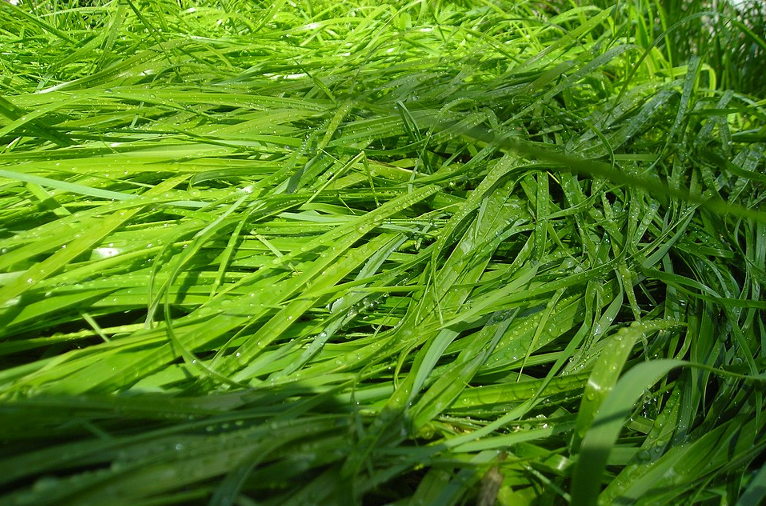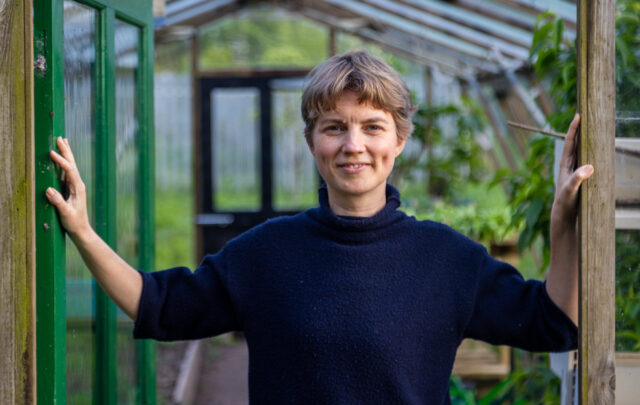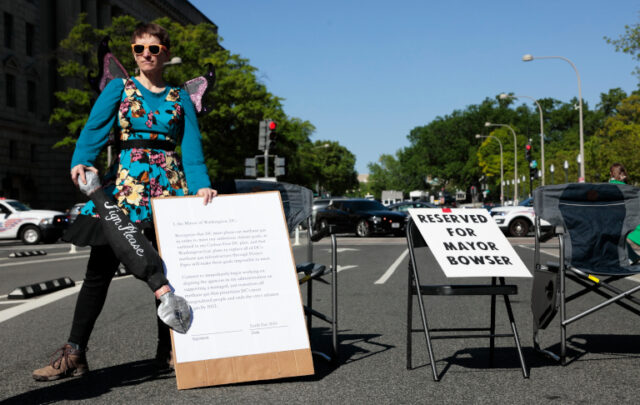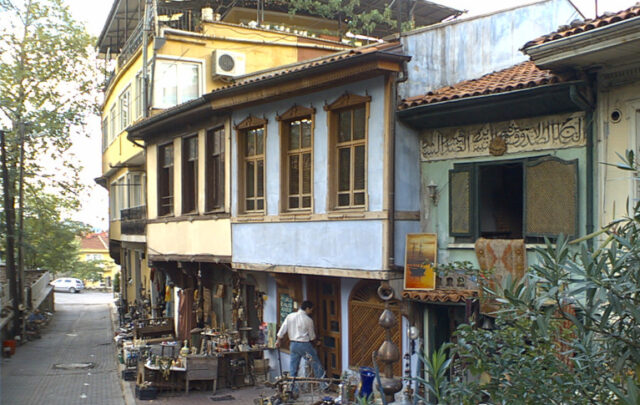 Reprinted with permission from I Want a Better Catastrophe: Navigating the Climate Crisis with Grief, Hope, and Gallows Humor, Andrew Boyd (February 2023) New Society Publishers.
Reprinted with permission from I Want a Better Catastrophe: Navigating the Climate Crisis with Grief, Hope, and Gallows Humor, Andrew Boyd (February 2023) New Society Publishers.
MEETINGS WITH REMARKABLE HOPERS AND DOOMERS
Dr. ROBIN WALL KIMMERER
“How can I be a good ancestor?”
Dr. Robin Wall Kimmerer, botanist, ambassador of lndigenous thought, and author of Braiding Sweetgrass, is one of the most celebrated naturalists in the country. What Would Nature Do? Her basic answer: what people have been doing for most of our history; and: what most Indigenous people are still doing. Oh, and: let’s ask the plants.
We met up in the Adirondack Mountains of upstate New York, a far cry from Detroit. We’re at the Blue Mountain Center, an ecology oriented writing center in the middle of the largest state park east of the Mississippi. We’ve both been here several times before, to write, reflect, hike, or to clear brush, patch holes, or pitch in in whatever way we can. The place is like a home away from home for both of us.
Over the course of our few days together, we read each other’s work and discussed topics ranging from ecological compassion, to the restoration (and “re-story-ation”) of our relationship to the natural world, to Richard Powers’ novel The Overstory. “Some of the trees in that novel have as much presence as some of the human characters living alongside them;’ I gushed.
“He could have gone further;’ she countered. “He could have given them full personhood. He could have treated them not as extraordinary objects of the forest but as actual beings:’
I tell her I’ve been following with fascination and awe Western science’s late-to-the-game understanding of plant intelligence and the far-more-complex-than-we-ever-imagined way that forests communicate and cooperate. I also tell her that, while I love the great outdoors, I’m fundamentally a city kid, one of those alienated denizens of the fabricated world who suffer from “nature deficit disorder:”
“Ha;’ she said. “You should get out more:’ I took her advice, hiking the grounds of the center, keeping an eye out for plants that play a starring role in Braiding Sweetgrass. “There’s an abundance of Umbilicaria americana lichen here;’ she tells me. “In fact, the chapter about lichens was actually written right here at the Blue Mountain Center:’
Lichen, it turns out, are not only one of the most ancient forms of terrestrial life, they’re actually two beings in one: a fungus and an alga, “joined in a symbiosis so close that their union becomes a wholly new organism:’ Using the motif of the “wedding basket;’ an exchange of wedding gifts (and promises) common to many Native American traditions, Robin draws a series of parallels between this lichen “marriage” and her parents’ marriage, which has lasted for over 60 years.
In the algal wedding basket: the gift of photosynthesis, the extraordinary ability to turn light into sugar; in the fungal wedding basket: the ability to reach its delicate threads out along the rock to find and dissolve minerals. One cooks, the other hunts; it’s “a reciprocal exchange of sugar and minerals:’ Likewise, in her parents’ marriage, “the balance of giving and taking is dynamic, the roles of giver and receiver shifting moment to moment:’ Both unions are committed to an “us” that emerges from well matched strengths and weaknesses, and extends into, and often benefits, the broader community or ecosystem. Core to both unions: mutual reciprocity. Basically, a gift economy.
Throughout the book, she weaves together many such examples, drawing lessons from both the natural world and her own family and cultural history to guide us towards a more reciprocal paradigm. Instead of a one-way extractive and instrumental attitude to the natural world, she’s telling a different story of who we are (or could be) as people. In the prologue to Sweetgrass, she paints this choice in mythic form, staging an encounter between Eve and Skywoman.
In the storytelling traditions of the original peoples throughout the Great Lakes region, Skywoman is the first woman. She falls through a hole in Skyworld, toward a dark, watery earth, clutching a bundle in her hand. The water animals see her fall. The geese fly up to catch her. A huge turtle offers her his back to set foot on. But she needs land to live, and there is none. Loon, otter, sturgeon and others try to dive to the very bottom of the water where it is said there is mud. None succeed, some don’t return. Finally, muskrat, weakest swimmer of them all, volunteers to go. He dies in the effort, but floats back up to the surface with mud clutched in his paw. Skywoman spreads the mud on the back of turtle, does a powerful dance and a song of gratitude, and the mud turns to land. Turtle Island is born. She takes the bundle in her hand-fruits and seeds from the Tree of Life that she grabbed as she fell-and scatters them across the new land. She tends to them, and nourished by the light pouring through the hole in the sky through which she fell, they grow, and the earth turns from brown to green. And with all this abundance, many of the water animals come to live with her on Turtle Island. A gift is given; in turn, a gift is received.
Skywoman created a garden for the good of all. Meanwhile, on the other side of the world there was another woman in a garden with a tree. But when she ate the fruit, she was exiled, and now, “in order to eat, she was instructed to subdue the wilderness into which she was cast.”
“Same earth, same species, different stories;’ Robin writes. It’s a collision of creation myths and civilizations:
One story leads to the generous embrace of the living world, the other to banishment. One woman is our ancestral gardener, a co creator of the good green world that would be the home of her descendants. The other was an exile, just passing through an alien world on a rough road to her real home in heaven.
Eventually, the offspring of Skywoman and the children of Eve meet and, as Robin tells it, “the land around us bears the scars of that meeting, the echoes of our stories:’
For Robin , however, this echo is insufficient. Because the story of Skywoman is not a cute relic of the past, but full of vital instructions for the future: about reciprocity, gratitude, humility, and the wisdom of the natural world. Unlike the Western tradition, with its hierarchy of beings that places humans at the top and plants at the bottom, the Indigenous worldview sees humans as “the younger brothers of creation:’ We’re the ones who’ve only just shown up; it’s us who have the most to learn. “Plants;’ notes Robin, “know how to make food and medicine from light and water, and then they give it away:’ How about us? For Robin, plants are our teachers. The question is: can we listen? (And even if we eventually do learn to listen, will it by then be too late?)
At some point, amidst all our talk of plants, I innocently ask her when she became a botanist. She corrects my colonial mindset in the gentlest way imaginable: “I think I was born a botanist. I simply am. I cannot remember a time in my life when plants were not my family and my companions:’
For our interview, we met in one of the center’s cabins, and I made a fire. It was a noticeably poor fire: slow to catch; smoke leaking into the room. Is that because after our easy back-and-forth there was now a tape recorder involved, and I was nervous? In any case, we sat down by this undignified fire, and began.
(Ed. note: What follows is a partial transcript of the interview in Andrew’s book, followed by his concluding thoughts.)
Andrew: Can you tell me and my tape recorder a tiny bit about yourself? How does your background shape the approach you bring to the climate crisis?
Robin: The little bio is that I am currently a professor of plant ecology and the Director of the Center for Native Peoples and the Environment, which is explicitly designed to bring together scientific tools with the wisdom of traditional people.
Andrew: That’s unusual in an academic setting.
Robin: Yes it is. The academy tends to be pretty hostile to such things. But I don’t think of traditional ways of understanding as a challenge to science, per se. I believe Western science and “traditional knowledge” are both science. Science is a set of tools. We can use those tools for all sorts of things. We can use the tools of Western science without buying the whole scientific worldview. We can use scientific tools in an Indigenous worldview. That’s really what I’m all about.
Andrew: You also mentioned a complicated ancestry. An Irish carpenter in your family tree. A mixture of Native and white ancestry.
Robin: I’m a member of the Citizen Potawatomi Nation. I’m of mixed heritage, like many of our people are. Our people were historically removed from our homelands in the Great Lakes, first to Kansas, and then to Oklahoma. Our people took three, four months to do that walk. The Cherokee talk about their Trail of Tears. We call ours the Trail of Death. In the context of Climate Change, I think about that part of my heritage a lot. We experienced tremendous climate change in a single season. Our people walked from the forests of the Great Lakes, to the prairie grasslands. If you look at climate maps today, you’ll basically see that what is now the climate of Kansas and Oklahoma is moving to Wisconsin. Our people did that walk, and now-
Andrew: Nature is walking it back.
Robin: Nature is walking it back. If I’ve had an “aha” moment about climate change, it’s that our people went through this radical climate shift while also in the midst of tremendous cultural loss-and we survived.
Andrew: Oof. And this really wasn’t all that long ago, was it?
Robin: Not at all. My grandfather was one of those children who was taken from his family at nine years old. His brother was only seven. My grandfather was brought to the Carlisle Indian School. For me, growing up with those stories, and hearing what my dad had to say about it-and what my grandfather didn’t say about it-I kept thinking: Here was a school that was designed to make you forget who you were. So, couldn‘t there also be a school that would help you remember? That’s how I think about the Center for Native People and the Environment. Our mission is in many ways a response to my family’s and my people’s history of loss, which is a very formative story for me.
Andrew: You’re a scientist, yet you emphasize the critical role of story, myth, and even prophecy in addressing the climate crisis. Why so?
Robin: As a member of the scientific community, I’ve been living with the knowledge of our climate threat for a long time. Originally-and naïvely I assumed that once people knew what was happening, well, they wouldn’t let it happen. But, for the most part, that’s not how we’ve responded. The incrementalism of climate change-the way it happens molecule-by-molecule with no malice-is confounding . It can be hard for people to see and feel the danger, never mind act on it. I realized: we know it’s happening , and yet we’re letting it happen anyway. That realization struck moral terror into me.
Andrew: Not mortal terror, but moral terror. Say more.
Robin: If you know that what you’re doing is wrecking the world and you’re doing it anyway, that’s a moral problem. This realization propelled me to not just do the science, but to become a storyteller, as well. I real ized: information isn’t going to save us, but stories might. And, in any case, it’s too urgent, too important, not to try. Yes, I think we need a carbon tax. Yes, I think technology can play a role. Yes, we have to change our lightbulbs and our tech and our economic policy, but what we really have to change is how we conceive of ourselves.
Andrew: So, what is the central story that needs to be “re-storied” here?
Robin: The story I feel most compelled to try to disrupt is this story about who we are as people. We have this notion that we’re just takers. (Hell, our government doesn’t even call us citizens anymore. It calls us “consumers:’) But we’re not just takers. We’ve forgotten that we can be partners, too. That we can bring good things to the table. We have to change the story that we are inevitably bad players in a living world, otherwise, we just fall into despair and down the toilet, right? We end up in a place where there is nothing we can do. Because, well, it’s just human nature. But it’s not human nature. Yes, it’s been human behavior for the last 500 years. But 500 years is an eye blink in the scope of human history. We’ve bought this story, and it’s a destructive story. Maybe it’s made life convenient and easy in an iPhone-ish way, but it hasn’t made us happy.
Andrew: Unfortunately, it’s the only story a lot of us can see. Our big lie is so big that it’s invisible to us.
Robin: A big lie is invisible until we see another story. If we see another story, we can look at our own and say, well, wait a minute, what are the consequences that flow from living that story? This can be an extraordinary act of liberation.
I am no scholar of politics, policy, economics, or any such thing. (I’m a botanist.) And so, this may come across as quite simple minded, but it seems to me that we have a choice to look at the world as if it were a gift, or we can look at the world as if it is property. It’s within our own power to make that choice.
Andrew: What role does language play in making that choice? In choosing another story?
Robin: In Braiding Sweetgrass, there’s a chapter called “Learning the Grammar of Animacy.’ It’s about my own learning-late in life-of the Potawatomi language, which is so difficult because it is impossible in our language to speak of the living world as “it:’ For example, Andrew, you’re sitting by the fire. So, I wouldn’t say “it” is sitting by the fire.
Andrew: I’m not an “it.’
Robin: Right. In English, we have a special grammar for each other. But in Anishinaabe, that human exceptionalism doesn’t exist. All beings are treated as family, as relatives, as alive. That animacy is baked into the Ianguage, into the grammar. And so, knowing that the way we speak deeply shapes how we know the world, I wondered whether we could we come up with a way to “animate” the English language so that we no longer refer to our relatives as stuff? And so, I asked my language teacher, “Do we have a word for a being, an earthly being?” He said, “Yeah, we do. It’s bimaadiziaki;’ which translates as living being of the earth.
Andrew: And your proposal?
Robin: To replace the word “it” when we’re speaking of a living being with the word “ki:’ (The last syllable of bimaadiziaki.) Which slides nicely, I think-along the pronoun sequence: he, she, ki, and it.
Andrew: But a table, say, would still be an “it”?
Robin: Sure. Tables are inanimate in Potawatomi, too.
Andrew: Okay.
Robin: The elegance really shows up when we go plural. And here we don’t have to borrow from Potawatomi because we have our own perfectly good word in English, which is “kin:’
Andrew: Just add an “n” to “ki:’
Robin: Yes, and suddenly, we are talking about our relatives. We can say “it” for bulldozers and paperclips, but everybody else gets to be a person, and that takes away permission to exploit the world as if it was all stuff.
Andrew: It’s a very beautiful idea. Hard to actually implement, I’d imagine, but worth it. We need to retrain ourselves around the values we believe in.
Robin: For me, it’s a simple substitution. Today, for example, I was out walking, and there was a beautiful white pine. I sat down, and I could either lean my back against it, or I could sit with ki. Those are different things. One of them is intimate and personal and makes you feel like, oh, I’m sitting with my buddy, my kin.
Andrew: It’s a way to give the world presence, agency, even selfhood.
Robin: Selfhood . Personhood. When I see birds. It’s like, Oh, kin are waking us up this morning. Kin are flying south for the winter.
Andrew: I can see how it could re-map your brain, how it could help re-enchant the world.
Robin: Right. In fact, I did an experiment along those lines with freshman composition students. I gave them a talk about ki and kin and asked them to experiment with using it, and how it felt. Some of their responses were like, “… this is really stupid:’ But others are like, “Oh, my God, this makes me feel so happy. This makes me feel so connected:’
Andrew: In the Hopi language, you don’t “have a brother”-you “are brothered by.’
Robin: Yes. What are nouns in English are verbs in my language, including land forms and different forms of water. The word for “bay;’ for example, is actually “to be a bay:’ Wiikegama.
There are many other words like that. To be a river. And technically speaking, even “to be a day of the week:’ Grammatically, we say “to be a Saturday;’ “to be a hill;’ “to be a mountain.’ That’s one of my favorites. It isn’t “a mountain;’ it’s “to be a mountain.’
Andrew: A language built this way makes everything come alive.
Robin: Everything is alive…
The fire kept going for a while after Dr. Kimmerer left the cabin. I sat there and pondered all that she’d shared. As with the previous interviews, I was reeling at the huge shift in consciousness she was offering.
Plants are not just alive, they are intelligent, they are beings, they are persons, even. And not just plants: mountains are beings, shorelines are beings, a rock that’s become a home for lichen is a being. And once we see our proper place in this living universe, we realize we are not lord over it all, but kin and co-beings amongst it all.
At the political level, this paradigm shift, “takes away permission to exploit the world as if it was all stuff;’ says Robin . At the philosophical level, it literally changes what is. It changes what is alive.
To truly grok that the beings we’ve treated as objects, are actually more like holy people, requires a kind of spiritual awakening that is still unfolding for me. In the meantime, it shows up in daily rituals and little shifts in my awareness and attention. On my hikes now, I notice myself giving a nod to the big trees on my path, a little bow to the boulders, a tiny wave to the beetles, a gentle salute to the hawk soaring overhead. As a semi-vegetarian, it has me confused. Before my meeting with Robin, when I’d eat, say, a lox and cream cheese bagel, I’d say, “Thank you, Mr. Salmon:’ It had a quirky formality to it, but felt respectful. Now, what do I say? “Thank you, Mr. Salmon . Thank you, Mr. Red Onion, Mr. Tomato, Mr. Caper, Mr. Poppy Seed, Ms. Cow (there’s milk in that cream cheese), Ms. Hen (there’s egg in that bagel batter)”? And how far do I go? There was some yeast involved, wasn’t there? Nonetheless, it’s helping me recognize with gratitude this wider circle of beings-including Mr. Deli Man, Mx. Delivery Person, and Ms. Farmer Lady-involved in my lunch. For all its awkwardness, my newfangled mealtime ritual is helping me to “remember how to remember;’ as Robin might say.
Her advice for how we get ourselves out of this mess is as revolutionary as it is charmingly obvious: Listen to the plants. “They are carbon specialists;’ she said. “They’re already converted to a 100% solar economy:’ And they did it “with beauty and generosity and flowers and berries:’
Her other advice: “Information isn’t going to save us, but stories might:’ It’s not what I expected to hear from a scientist, but after decades of science communication that’s her conclusion. If at our core we think we’re bad players in the natural world, we will simply continue to play badly, and eventually destroy our home. Instead, we must “re-story” who we are. The last 500 years of human behavior is not human nature. For the vast majority of our species’ history we’ve been partners, not just “takers.’ We can decide now to once again look at the world as a gift, not as property. She believes this is a choice we still have the power to make; whether we’ll do it in time she doesn’t know.
When it came to the question of hope, she said, “I honestly don’t even know what hope means anymore.’ In its place she takes courage from the history of her own people, who survived a radical climate shift while being subjected to tremendous cultural loss. Instead of playing games with hope, she simply notes that, “The house is on fire. Your family is in it. What do you do? You put out the damn fire:’ To help us focus on putting out that fire, and building good soil for regeneration, she shares stories, among them her people’s Prophecy of the Seventh Fire, in which humanity has to re-learn the path forward; and the allegory of the confluence of two great rivers, in which the threat of loss propels action. These stories left me pondering: What kind of ancestor do I want to be? What do I love too much to lose? What must I pick up and carry into the future? Across the days after our meeting, I realized Dr. Kimmerer’s questions weren’t just thought experiments, but heart experiments. Nor were they the first I’d uncovered along my journey. Such experiments can jolt-or charm-or slowly scaffold-us into new ways of thinking and being. I’ve gathered a handful of them here.
Teaser photo credit: Sweet grass – Photographed in British Columbia, Canada 2007. By Kodemizer at the English Wikipedia, CC BY-SA 3.0, https://commons.wikimedia.org/w/index.php?curid=7065141





